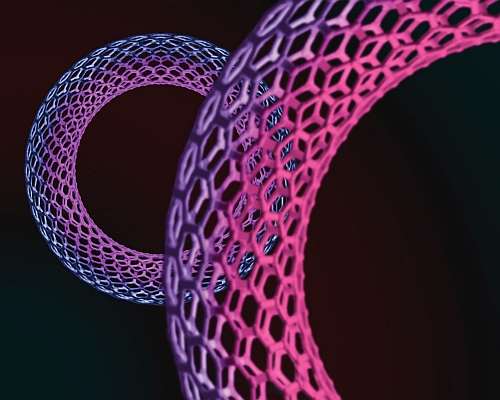Vacuum coating, or physical vapor deposition (PVD), has become a major enabling technology in the field of surface engineering. Not only does it provide the ability to deposit both thick and thin coatings of materials that cannot be deposited by other means, it does so at a low temperature and with little atmospheric or water pollution.
Range of Materials
Vacuum coatings allow the deposition of both elemental and compound materials of interest, and also enable coatings to be deposited upon a large range of materials, including non-electrically conducting materials such as plastic, fiber and wood.
For example, vacuum-deposited aluminum is a common coating material for corrosion protection (IVD—Mil Spec Mil-C-83488). Aluminum is also used for coating strip steel and reactive metals such as uranium. Another elemental material that is finding widespread use is “diamond-like carbon” which is a hard carbon material that is used as a wear-resistant coating.
By using a reactive gas (nitrogen, oxygen, acetylene) in a low-pressure plasma environment, compounds of nitrides, oxides and carbides may be deposited by vacuum coating processes. For example, titanium nitride (TiN) is a hard, gold-colored compound that is used for coating tools for machining applications, as well as a decorative coating for plumbing and other hardware. Other compounds that are deposited include zirconium nitride (ZrN), chromium nitride (CrN), titanium carbide (TiC), and more complex materials such as titanium-carbo-nitride (TiCN) and titanium-aluminum-nitride (TiAlN). Specific properties may be tailored by changing the composition of the coating material and by using layered structures.
In some cases, both electroplating and vacuum coating are used as a hybrid coating technology. An example of this process is coating of cast brass plumbing fixtures with TiN (gold color) on top of electroplated nickel.
Society of Vacuum Coaters
The
Society of Vacuum Coaters (SVC) is an international association of scientists, engineers and technical personnel involved in understanding and developing new vacuum (and low-pressure plasma) coating processes and products, resulting in the transfer of that knowledge into production at a commercially viable unit cost.
SVC is guided by technical advisory committees (TACs) that cover a wide variety of subjects, from optical coatings to moisture barrier coatings, to energy-related coatings such as those for thin film solar cells and low-E windows. One of the largest TACs covers protective, tribological and decorative coatings. It is in this area that a common interest may be found between electroplaters and vacuum coaters.
SVC Technical Conference
The SVC’s 56th annual technical conference, TechCon, will be held in Providence, RI, April 20-25 2013, and provides an opportunity for people interested in vacuum coating to obtain basic information through the SVC tutorial courses as well as to attend the large equipment/supplier exhibit. The conference also provides opportunities for networking and attending presentations on the business aspects of the vacuum coating industry. Tutorial courses that are being offered at the 2013 conference that may be of particular interest to electroplaters include Vacuum Systems, Materials, and Operation; An Introduction to Physical Vapor Deposition Processes; Properties and Applications of Tribological Coatings; and Sputter Deposition in Manufacturing.
Detailed information about TechCon, the education program and the exhibit is available at SVC.org. Attendees and manufacturers from allied fields, and electroplaters who are beginning to consider vacuum coating are welcome.
Educational Programs & Resources
SVC also offers other educational products, including a webinar program of live and recorded presentations. These three-hour webinars are described at SVC.org/education/webinars.cfm and outlined in the graphic on the left. In addition, the society also can bring its tutorial courses to a company site through its On-Location Education Program. Details can be found at SVC.org/Education/on-location-education-program.cfm.
Visitors to the SVC website also can access the Education Guides to Vacuum Coating Processing, 109 individual, two-page guides on different aspects of the equipment and technology associated with vacuum coating processing by PVD. The SVC Bulletin also is published three times per year and contains technical and related articles, society news, as well as product and services information. It is distributed in both a hard copy and digital format. SVC also publishes a monthly digital publication, SVConnections, that provides up-to-date information on new developments in the field.
Also available online is the SVC Vacuum Coating Resource Guide, which contains a multitude of contract coaters, equipment suppliers, materials suppliers and service suppliers.n
To learn more about SVC, the Annual Technical Conference, exhibit and education opportunities, visit SVC.org or contact SVC at svcinfo@svc.org or 505-856-7188.
RELATED CONTENT
-
MVRE is underutilized in the treatment of industrial wastewaters that are typical of metal fabricating and finishing industries. Increasing energy costs, rapidly decreasing freshwater resources, and growing sensitivity towards the environmental impact of industrial management practices are the driving forces in the development of more sustainable technology.
-
The deposition of a film or coating in a vacuum (or low-pressure plasma) environment. Generally, the term is applied to processes that deposit atoms or molecules one at a time, such as in physical vapor deposition (PVD) or low-pressure chemical vapor deposition (LPCVD) processes.
-
Applying highly-adherent aluminum coatings onto metals is recognized as a replacement for cadmium...

















